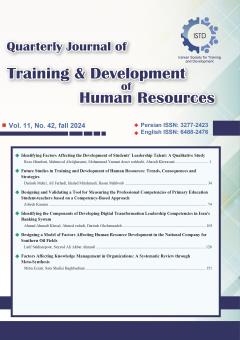Strategies for Enhancing Managers and Improving Financial Productivity through Organizational Changes
Subject Areas : روش های نوین آموزش وتوسعه منابع انسانی
1 - دانشگاه شهید بهشتی
Keywords: Excellence, Human Resources, Faculty Members, Medical University,
Abstract :
The purpose of the current research was to validate the designed model of human resources development based on the statement of the second step of the revolution. For this purpose, a mixed approach of exploratory research was used. The research community in the qualitative part consisted of experts and specialists in the field of human resources development and the statement of the second step of the revolution, who were among the university faculty members and were selected by purposeful sampling method. Accordingly, 15 individuals were interviewed until the data reached information saturation. In the quantitative part of the research, from the employees of the human resources department of the ministries, 372 individuals were selected through random stratified sampling and the research questionnaire was implemented. In the qualitative part the data was analyzed by qualitative content analysis method, and in the quantitative part the data analysis was conducted with descriptive and inferential methods using SPSS and Smart PLS software. According to the findings of the research in examining the fit of the model, there was a good fit of the model. After examining the fit of the model designed to evaluate the main dimensions of the human resources development model based on the statement of the second step of the revolution, it was found that the dimension of society plays the most important role among the dimensions examined, and after thi development model based on the statement of the second step of the revolution, it was found that the dimension

